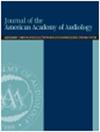遗传性重度听力损失的人工耳蜗使用者的长期阻抗趋势。
IF 1
4区 医学
Q3 AUDIOLOGY & SPEECH-LANGUAGE PATHOLOGY
引用次数: 0
摘要
阻抗是任何人工耳蜗(CI)拟合部分的基本参数。它在监测电极功能和周围解剖结构的状态是有用的。目的:本研究的主要目的是评估先天性遗传性重度听力损失患者植入人工耳蜗的5年阻抗值趋势。研究设计:观察性、回顾性、单中心研究。研究样本:连续27例患者(女性9例,年龄12.0±7.6岁;范围:4.2-40.4),遗传诊断为GJB2突变导致先天性深度听力损失,于2010年至2020年接受人工耳蜗植入,听力效果良好。ci的干预阻抗值从ci的编程软件中获得,该软件为每个患者的每个随访部分记录这些参数。在共地、单极子1、单极子2和单极子1 + 2刺激模式下,测量22个电极随时间的阻抗值(激活、6、12、24和60个月后)。结果CI激活与6个月随访之间存在显著差异。22个电极中的每一个都有这种差异。电极1至4在每个时间间隔内的阻抗值均高于其他电极。重复测量方差分析排除了6个月至5年随访期间阻抗值的显著变化。结论激活后阻抗值非常稳定,至少在前5年内是如此。在这些情况下,即使是最小的阻抗变化也应仔细评估其对听力表现的可能影响。本文章由计算机程序翻译,如有差异,请以英文原文为准。
Long-Term Impedance Trend in Cochlear Implant Users with Genetically Determined Congenital Profound Hearing Loss.
BACKGROUND
Impedance is a basic parameter registered at any cochlear implant (CI) fitting section. It is useful in monitoring electrode functioning and the status of the surrounding anatomical structures.
PURPOSE
The main aim of this study is to evaluate the 5-year impedance-value trend in patients affected by congenital genetically determined profound hearing loss implanted with Cochlear Nucleus devices.
RESEARCH DESIGN
Observational, retrospective, monocentric study.
STUDY SAMPLE
Twenty-seven consecutive patients (9 females: 12.0 ± 7.6 years old; range: 4.2-40.4) with genetic diagnosis of GJB2 mutation causing congenital profound hearing loss who underwent cochlear implantation from 2010 to 2020 with good auditory benefit.
INTERVENTION
Impedance values of the CIs were obtained from the CIs' programming software that registers those parameters for each follow-up section of each patient.
DATA COLLECTION AND ANALYSIS
Impedance values were measured over time (activation, 6, 12, 24, and 60 months after cochlear implantation), for each of the 22 electrodes, in common ground, monopolar 1, monopolar 2, and monopolar 1 + 2 stimulation modes.
RESULTS
A significant variation was found between CI activation and 6-month follow-up. This difference was found for each of the 22 electrodes. Electrodes 1 to 4 showed higher impedance values compared with all other electrodes in each time interval. Repeated-measures analysis of variance ruled out significant variations in impedance values from 6-month to 5-year follow-up.
CONCLUSIONS
Impedance values were extremely stable after activation, at least for the first 5 years. In these cases, even minimal impedance variations should be carefully evaluated for their possible implications on hearing performance.
求助全文
通过发布文献求助,成功后即可免费获取论文全文。
去求助
来源期刊
CiteScore
3.10
自引率
0.00%
发文量
46
审稿时长
6-12 weeks
期刊介绍:
The Journal of the American Academy of Audiology (JAAA) is the Academy''s scholarly peer-reviewed publication, issued 10 times per year and available to Academy members as a benefit of membership. The JAAA publishes articles and clinical reports in all areas of audiology, including audiological assessment, amplification, aural habilitation and rehabilitation, auditory electrophysiology, vestibular assessment, and hearing science.

 求助内容:
求助内容: 应助结果提醒方式:
应助结果提醒方式:


